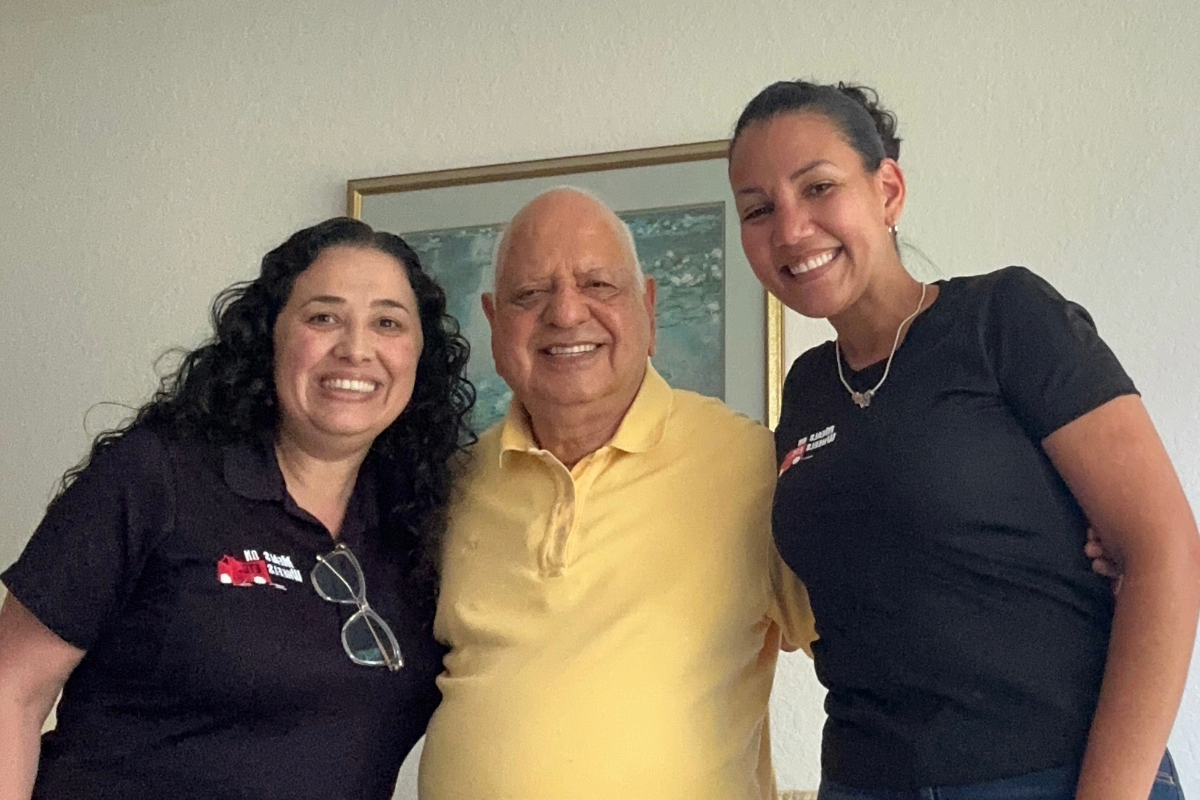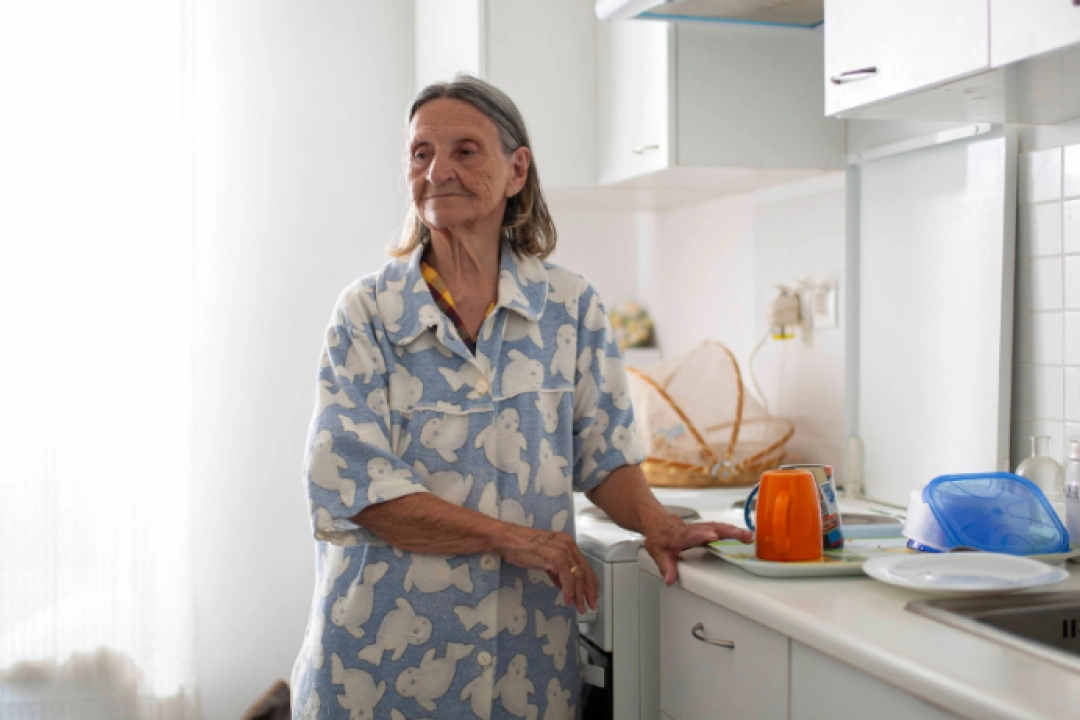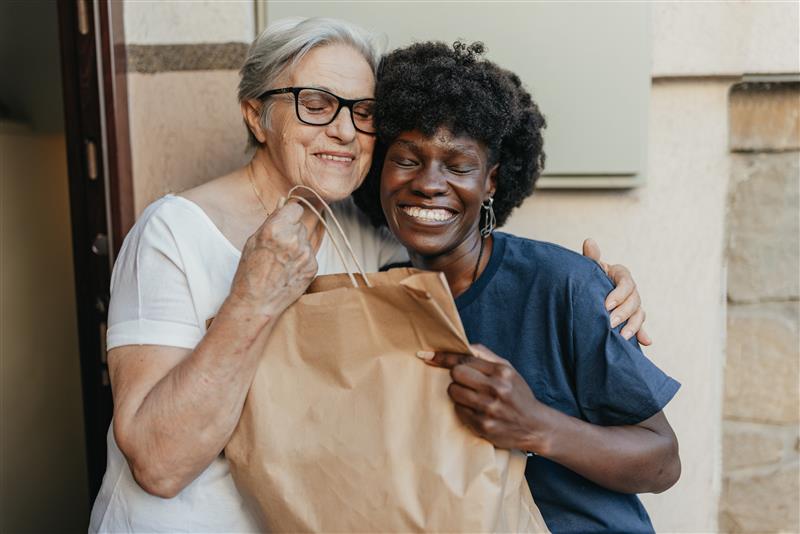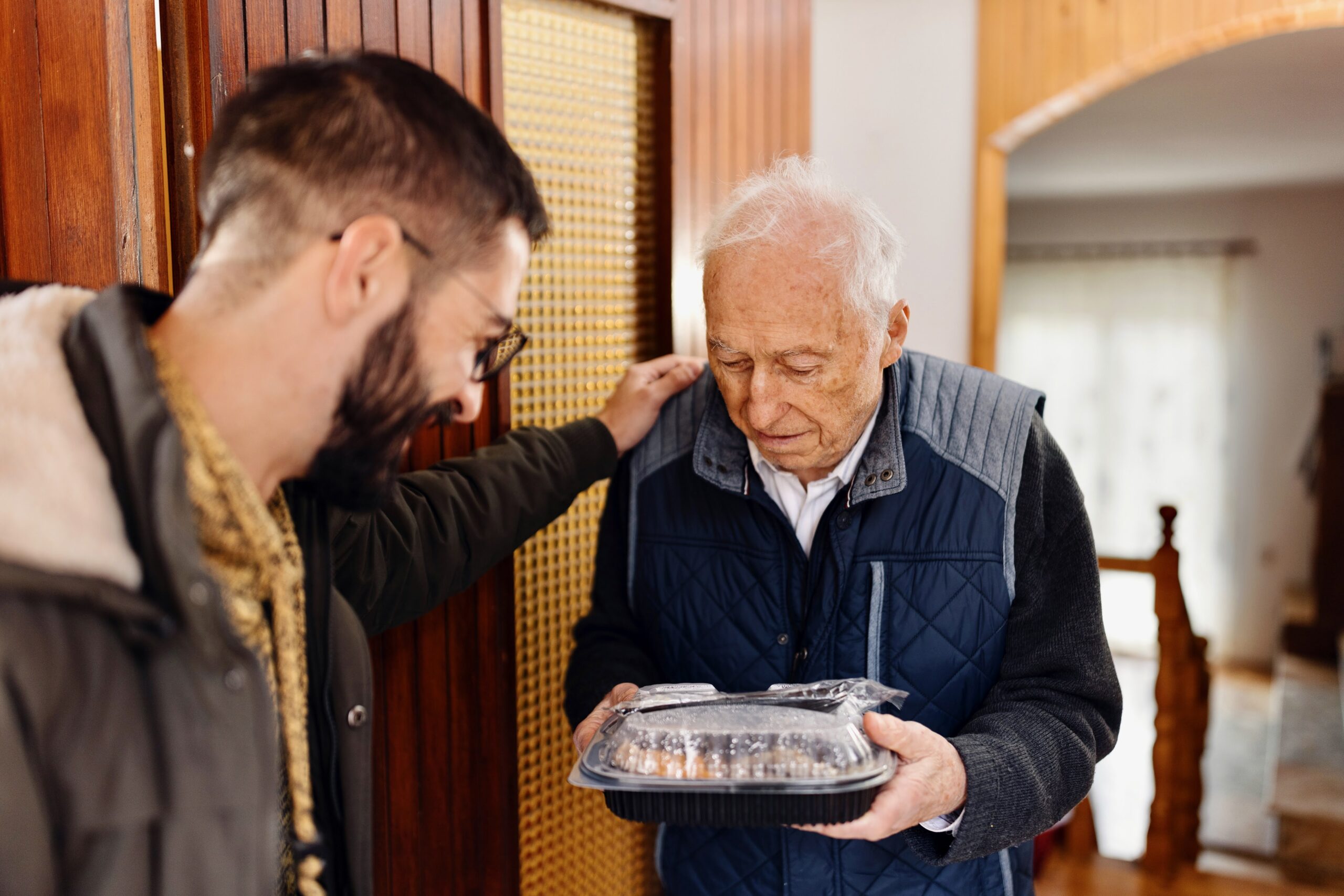
A Dangerous Wait: Satish’s Wait for Meals in Florida
In Florida, seniors waiting for meals face growing waitlists, hunger, and isolation. Satish’s story shows the real cost of delay — years spent hungry and alone while fundi...
Read This Story
The article discusses the severe economic hardship experienced by many older Americans, who often struggle to meet basic needs due to complex social programs and bureaucratic challenges. It emphasizes the crucial role of organizations like Meals on Wheels in providing essential support and improving the well-being and social connections of seniors facing poverty and isolation.

One in two seniors lacks the income to afford their basic needs. We often hear stories about seniors making the impossible decision between food and medicine.
The truth is that economic hardship — a persistent problem among older adults — takes many forms. For persons facing homelessness, as an example, financial stability can be a complicated process.
Our story, Finding a Slice of Heaven, follows the journey of Michael Snodgrass, a homeless U.S. Army veteran and amputee.
Since relocating from Anchorage to Fairbanks, Alaska, following post-surgical treatment, Michael’s been surrounded by a support system of individuals and caregivers who recognize that, for the homeless, meeting basic needs can be life-altering and a pathway for reclaiming independence and social connection and community.
Our piece ends with Michael settling into a studio apartment. It’s a meager space, as are his resources and belongings, but they are his — his slice of heaven, as he says. Today, he receives support furnishing his apartment, help retrieving his mail, particularly during the unforgiving Arctic Alaskan winters, and a regular delivery of nutritious food from the local Meals on Wheels.
Unfortunately, his story of support from an invested community of caretakers is not true for every senior facing economic hardship. The path to financial stability or securing the services to support seniors facing instability is burdensome and exhausting — especially when they have to go it alone.
To explore this topic and its relationship to nutrition program access, we sat down with Georgetown University Professor Pamela Heard. Her research focuses on aging, welfare and social welfare policies, particularly investigating how federal (and state) policies affect economic inequality among older adults.
Her research highlights the reality that many seniors eligible for social benefits don’t receive them: Below 50% of eligible older adults receive Supplemental Nutrition Assistance Program (SNAP) benefits — (formerly known as food stamps, distributed monthly to help families purchase food) — and only 50-60% receive funds through the Supplemental Security Income Program, which provides cash assistance to disabled children and adults or individuals 65 and older who earn less than $1,971 a month.
Numerous factors create what Professor Heard describes as “exceptionally low” access rates, or, in this context, the rate at which eligible individuals receive benefits designed to support them financially.
“On average, older adults with lower incomes tend to be in worse health,” Professor Heard notes. “They are more likely to be disabled and [face] real challenges working through complex programs.”
For example, the Supplemental Security Income Program requires applicants to complete complicated paperwork, demonstrate their low assets through documentation, and often visit a Social Security field office. This task is difficult for anyone, much less a homebound senior or an older adult with limited mobility. Any additional health challenges they are facing only create another hurdle.
Professor Heard also points to various shifting circumstances that create a harsher economic environment for older adults.
“In recent years, things have gotten rockier for older adults,” Professor Heard asserts.
20 or 30 years ago, people were more likely to retire with generous public pensions and social security. They could get by even if their pensions were small, say $100 a month. Sadly, the world of fixed pensions no longer exists. Now, retirees increasingly rely on savings gained from employers to supplement their lives and must rely on themselves and make good choices — like choosing between medicine and groceries — to survive. Add on the rising cost of health care, and you begin to see the root causes of declining economic security among seniors.
Among the chaos, Social Security Benefits remain a bright spot as a reliable part of many individual financial plans, though there’s still inconsistency. “The flip side is for people relying on private investment income — that doesn’t provide the same protection that defined Social Security benefits do,” Professor Heard says. “It’s a mixed bag [for older adults].”
She also shares that aging adults in rural communities struggle with the widespread closure of hospitals in states like Wisconsin. These states have seen their profits dip following the decision not to expand investment in Medicaid between 2008 and 2010, during the early days of Obamacare. That means less access to quality health care, something only solvable by a government intervention that has yet to arrive.
Her point on quality health care being dependent on where you live and work paints a grimmer picture; it’s not just a matter of accessing services but having the means to maximize those services to meet your needs.
We were eager to know where nutrition-oriented organizations, such as Meals on Wheels, fit into the equation. According to Professor Heard, they are more vital than ever.
“As I mentioned, many people eligible for nutrition support don’t get them,” Professor Heard says.” People may fill that gap by relying on programs like Meals on Wheels.
She restates that your level of mobility is a significant factor.
“There’s another part of it: To use your SNAP benefits, you have to be able to go to the grocery store and cook for yourself,” Professor Heard notes. “Even if you have SNAP benefits, if you’re an older adult, especially someone with disabilities or an inability to drive, you’re still not going to get the kind of additional nutrition that you need.”
Professor Heard also acknowledges Meals on Wheels’ comprehensive approach to caring for homebound seniors, especially its emphasis on combating the often deadly consequences of social isolation, is essential to this effort.
“Social connection is a huge part of it,” she says. “We know that isolation, loneliness, a lack of social connections later in life, or at any point in life, has [significant harmful ] effects on people’s mental and physical health. By some estimates, the effects of loneliness or social isolation on mortality, defined as the number of deaths in a certain group of people in a certain period of time, are [more substantial] than someone smoking; there are real consequences to that kind of isolation and loneliness. That is another part Meals on Wheels can help with.”
Her research demonstrates that being economically insecure or impoverished negatively impacts your health and overall well-being — at any stage of life — and reveals that older adults are biologically more vulnerable to this.
“You’re at greater risk as you age, made worse by not having the economic resources you need to meet basic needs. Also, stress, a sense of isolation and shame can create negative implications for people’s overall well-being.”
Professor Heard asserts that the political will to reform access to complex social programs and increase funding for organizations working in communities to serve older adults are natural first steps and vital to turning the tide.
Professor Heard also admits that policymakers have become more responsive to the need to invest more in health care and access to health care, but they shouldn’t — can’t — stop there.
What’s also become clearer over the past two or three decades is that investing in programs like Meals on Wheels and programs that affect people’s broader well-being — their ability to have enough to eat and to have some sense of social connection — matters, too.

In Florida, seniors waiting for meals face growing waitlists, hunger, and isolation. Satish’s story shows the real cost of delay — years spent hungry and alone while fundi...
Read This Story

Giving Tuesday is a day to come together and make a difference. With the right approach, your generosity can go even further. These Giving Tuesday donation tips will help you ...
Read This Story

Bring cheer to your table with senior-friendly holiday recipes. Discover nutritious twists on classic favorites, plus tips for making meals easier to prepare and enjoy.
Read This Story

The holidays should be a time of warmth and togetherness, but for many older adults, they bring long Silent Nights filled with isolation. From rising costs to growing waitlist...
Read This Story

Across the country, too many older adults are spending their nights hungry and alone, waiting for meals and care. This holiday season, help us end the silent nights of hunger for older adults. Your gift today helps the Meals on Wheels network deliver meals, care and comfort to seniors who can't afford to wait.